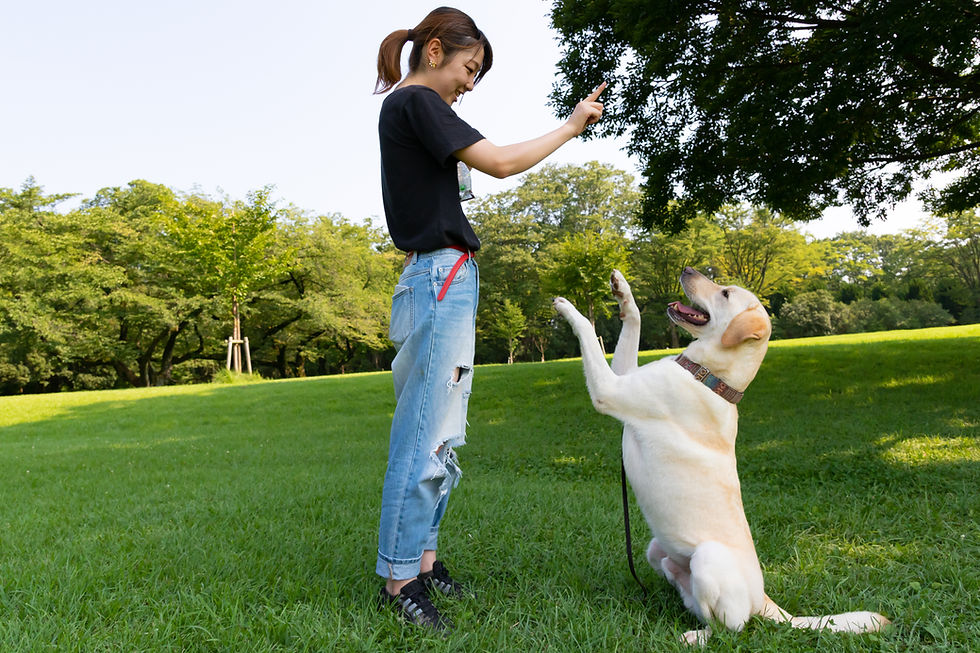How do you discipline a dog that doesn't listen?
- Subhodip Unitel
- Sep 24, 2024
- 4 min read
Training a dog can sometimes feel like a daunting task, especially when your furry friend doesn’t seem to listen. Understanding how to discipline a dog effectively is crucial for establishing a healthy and happy relationship. This blog will explore practical strategies to manage your dog’s behaviour, highlighting the importance of professional help from a Dog Obedience Trainer, if necessary.

Understanding Why Your Dog Doesn't Listen
Before diving into discipline methods, it’s essential to understand why your dog might be ignoring commands. Dogs can be distracted by their environment, experience anxiety, or simply lack proper training. Identifying the root cause is the first step toward effective discipline.
Common Reasons for Disobedience
Lack of Training: Dogs need consistent training to learn commands.
Distractions: Sights, sounds, and smells can easily divert your dog’s attention.
Fear or Anxiety: A stressed dog may not respond to commands.
Medical Issues: Sometimes, disobedience can stem from health problems.
Recognising these factors allows you to approach discipline more effectively. If your dog struggles with specific issues, consider seeking assistance from a Certified dog trainer.
Establishing Clear Commands
Using clear and consistent commands is fundamental in dog training. Here’s how you can make your commands more effective:
Use Simple, Short Commands
Dogs respond better to short phrases like “sit,” “stay,” or “come.” Keep your commands simple to avoid confusion. Using a consistent tone will also help your dog understand what you expect.
Reward Good Behaviour
Positive reinforcement is a powerful tool in dog training. When your dog follows your command, reward them immediately with treats, praise, or playtime. This will reinforce the behaviour and encourage your dog to listen more often.
Be Patient and Consistent
Training takes time, and every dog learns at their own pace. Consistency in your commands and rewards is vital. Use the same commands in the same tone to build familiarity.
Advanced Dog Training Techniques
If your dog continues to struggle with listening, you may want to consider advanced dog training methods. Here are a few techniques to explore:
Clicker Training
Clicker training uses a sound to signal to your dog that they’ve done something right. When your dog performs the desired action, click the clicker and follow it with a reward. This method provides immediate feedback and helps reinforce good behaviour.
Leash Training
A well-trained dog on a leash is easier to manage. Use a leash to guide your dog when they stray. If they don’t listen, gently redirect them with a command. This method not only promotes good behaviour but also keeps your dog safe.
Socialisation for Dogs
Socialising your dog can significantly improve their listening skills. Expose your dog to various environments, people, and other dogs. This will help them become more adaptable and focused, making them more likely to listen to you.
Seeking Professional Help
Sometimes, the guidance of a professional can make all the difference. Here’s when you might consider hiring a Dog Obedience Trainer:
Behaviour Modification
If your dog exhibits aggressive or fearful behaviour, a professional can help with behaviour modification techniques. A Dog Trainer can tailor a training plan to address specific issues your dog may face.
Group Classes
Enrolling in group classes led by a Certified dog trainer can provide valuable socialisation opportunities. These classes allow your dog to interact with others while learning to follow commands in a controlled environment.
Individual Training Sessions
For more focused attention, consider private sessions. A trainer can assess your dog's behaviour and create a custom plan. Individual training allows for a deeper exploration of your dog's needs.
Creating a Structured Environment
A structured environment can greatly enhance your dog’s ability to listen. Here’s how to establish a routine:
Set a Daily Schedule
Dogs thrive on routine. Feeding, walking, and training sessions should occur at the same time each day. This predictability helps your dog understand what to expect.
Designate Training Times
Set aside specific times for training. Short, frequent training sessions are more effective than longer, infrequent ones. Aim for sessions of 5-10 minutes several times a day.
Limit Distractions
When training, choose a quiet space free from distractions. This will help your dog focus on you and your commands. Gradually introduce distractions as your dog becomes more responsive.
Monitoring Progress and Adjusting Techniques
Training is not a one-time event; it’s an ongoing process. Regularly assess your dog’s progress and be ready to adjust your techniques as needed.
Keep a Training Journal
Documenting your training sessions can help you identify what works and what doesn’t. Note your dog’s responses to various commands and rewards. This will enable you to refine your approach over time.
Be Open to Change
If a technique isn’t yielding results, don’t hesitate to try something new. Every dog is unique, and what works for one may not work for another. Flexibility is key.
Conclusion
Disciplining a dog that doesn’t listen can be challenging, but with the right strategies, patience, and professional support, you can achieve lasting results. Incorporate clear commands, positive reinforcement, and consider seeking help from a Dog Obedience Trainer to enhance your training efforts.
At Pawsative Choices, we provide comprehensive canine training programs designed to improve obedience and foster a strong bond between you and your dog. Our expertise ensures that both you and your pet can enjoy a harmonious relationship built on trust and respect. Start your journey to a well-behaved dog today!


Commenti